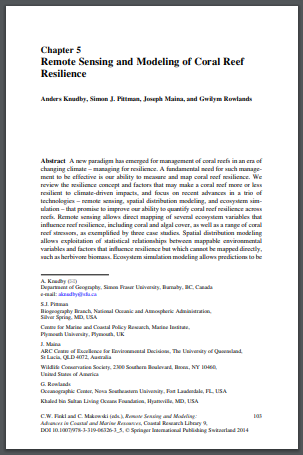
A new paradigm has emerged for management of coral reefs in an era of changing climate – managing for resilience. A fundamental need for such management to be effective is our ability to measure and map coral reef resilience. We review the resilience concept and factors that may make a coral reef more or less resilient to climate-driven impacts, and focus on recent advances in a trio of technologies – remote sensing, spatial distribution modeling, and ecosystem simulation – that promise to improve our ability to quantify coral reef resilience across reefs. Remote sensing allows direct mapping of several ecosystem variables that influence reef resilience, including coral and algal cover, as well as a range of coral reef stressors, as exemplified by three case studies. Spatial distribution modeling allows exploitation of statistical relationships between mappable environmental variables and factors that influence resilience but which cannot be mapped directly, such as herbivore biomass. Ecosystem simulation modeling allows predictions to be made for the trajectories of reef ecosystems, given their initial state, interactions between ecosystem components, and a realistic current and future disturbance regime. Together, these technologies have the potential to allow production of coral reef resilience maps. We conclude with a fourth case study that illustrates integration of resilience maps into a multi-objective decision support framework. Implementation of the managing for resilience paradigm is still in its infancy, but the rapidly advancing technologies reviewed here can provide the resilience maps needed for its successful operationalization.












